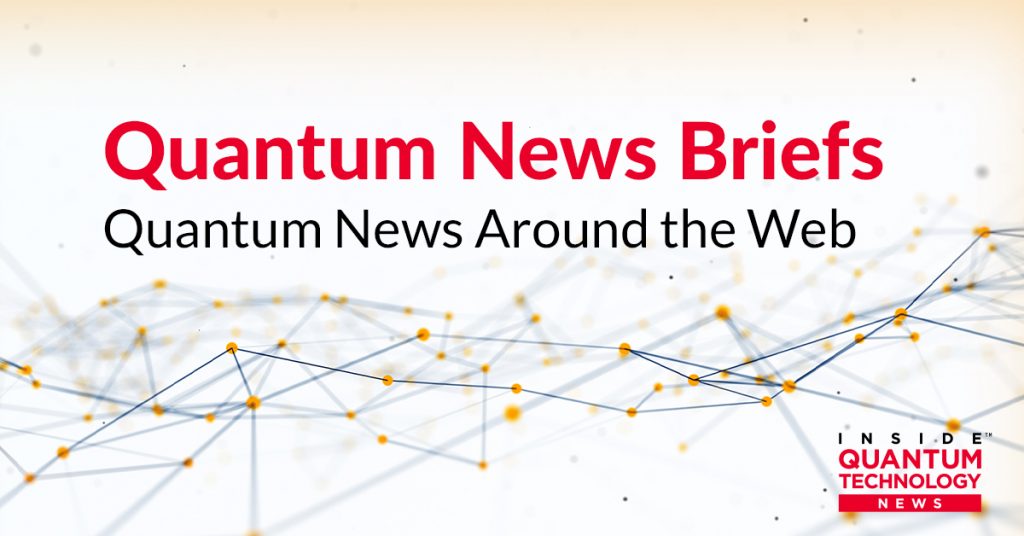Quantum News Briefs October 14 opens with the announcement that “IIT Madras joins the IBM Quantum Network”; followed by CU Boulder researchers probe of “honey-comb” like quantum material. Third is a breakthrough announcement from an international research team describing “Qubits for a programmable, solid-state superconducting processor” and MORE.
*****
IIT Madras joins IBM Quantum Network
As a member of the IBM Quantum Network, IIT Madras will get cloud-based access to IBM’s most advanced quantum computing systems and IBM’s quantum expertise to explore practical applications, and realize the wide-ranging benefits of this technology for business and society.
IIT Madras’ Centre for Quantum Information, Communication and Computing (CQuICC) will focus on advancing core algorithms in research areas like Quantum Machine Learning, Quantum Optimization, and applications research in finance. They will use IBM Quantum services alongside the open-source Qiskit framework to explore areas such as quantum algorithms, quantum machine learning, quantum error correction and error mitigation, quantum tomography, and quantum chemistry, and to also advance and grow the quantum computing ecosystem in the country. Researchers from IIT Madras will contribute to the advancement of research in the application of quantum computing with support from IBM Research India in such domains that are relevant to India.
IIT Madras joins more than 180 members of the IBM Quantum Network, a global community of Fortune 500 companies, start-ups, academic institutions, and research labs working with IBM Quantum technology to advance quantum computing and explore practical applications.
*****
CU researchers probe ‘astonishing qualities’ of honeycomb-like quantum material
The quantum material in question is known by the chemical formula Mn3Si2Te6. But you could also call it “honeycomb” because its manganese and tellurium atoms form a network of interlocking octahedra that look like the cells in a beehive.
Physicist Gang Cao and his colleagues at CU Boulder synthesized this molecular beehive in their lab in 2020, and they were in for a surprise: Under most circumstances, the material behaved a lot like an insulator. In other words, it did not allow electric currents to pass through it easily. When they exposed the honeycomb to magnetic fields in a certain way, however, it suddenly became millions of times less resistant to currents. It was almost as if the material had morphed from rubber into metal.
The group reports that, under certain conditions, the honeycomb is abuzz with tiny internal currents known as chiral orbital currents, or loop currents. Electrons zip around in loops within each of the octahedra in this quantum material. Since the 1990s, physicists have theorized such loop currents could exist in a handful of known materials, such as high-temperature superconductors, but they have yet to directly observe them.
Cao said they could be capable of driving startling transformations in quantum materials like the one he and his team stumbled on.
“We’ve discovered a new quantum state of matter,” Cao said. “Its quantum transition is almost like ice melting into water.” Click here to read original, lengthy article on CU website
*****
Breakthrough: Qubits for a programmable, solid-state superconducting processor
In a new paper, scientists demonstrated a “first look” at the emergence of quantum many-body scarring (QMBS) states as a robust mechanism for maintaining coherence among interacting qubits. Such exotic quantum states offer the appealing possibility of realizing extensive multipartite entanglement for a variety of applications in quantum information science and technology to achieve high processing speed and low power consumption. The paper, which will be published today (October 13) in the journal Nature Physics, is authored by ASU Regents Professor Ying-Cheng Lai, his former ASU doctoral student Lei Ying and experimentalist Haohua Wang, both professors at Zhejiang University in China.
“QMBS states possess the intrinsic and generic capability of multipartite entanglement, making them extremely appealing to applications such as quantum sensing and metrology,” explained Ying.
Key to the research is insight into delaying thermalization to maintain coherence, considered a critical research goal in quantum computing.
*****
Quantum computing could positively impact all 17 UN Sustainable development goals
Standard Chartered and Universities Space Research Association are partnering on Quantum-Inspired Machine Learning for Environmental, Social and Governance applications to help meet these UN goals. The team aims to develop advanced machine learning approaches to forecasting natural disasters, such as floods and cyclones, and explore how current-generation quantum processors, future quantum computer designs and physics-based hardware solvers could be leveraged to improve beyond the state-of-art achievable by classical machine learning techniques.
The USRA quantum team in the Research Institute for Advanced Computer Science (RIACS), will test, evaluate and enhance aspects of highly performant classical models and also design hardware-software systems that use the most advanced quantum machines available on the cloud.
USRA’s Dr. David Bell, Director of the Research Institute for Advanced Computer Science (RIACS) at USRA noted that “USRA is committed to advancing capabilities in environmental data sciences to help mitigate the impact of disasters such as wildfires and floods. This partnership brings together an interdisciplinary team of scientists in quantum computing, environmental data sciences and machine learning to examine how emerging technologies can be developed and applied to address computationally demanding problems in Enviromental, Social, and Governance (ESG) applications.”
At Standard Chartered, Elena Strbac, Global Head of Data Science and Innovation, said “We are excited to be renewing our partnership with our USRA colleagues in an area of such vital importance for the Bank, our clients, and our communities. We are keen to learn and to explore how quantum computing can help to accelerate the global goal to Net Zero, which is so critical for the future of our planet.”
RELATED on IQT: USRA, Standard Chartered Bank renew partnership, focus on machine learning
*****
Sandra K. Helsel, Ph.D. has been researching and reporting on frontier technologies since 1990. She has her Ph.D. from the University of Arizona.
